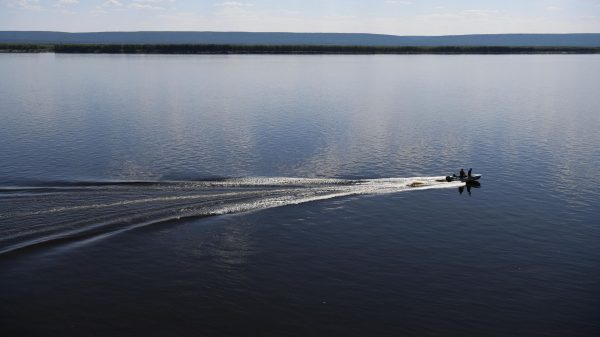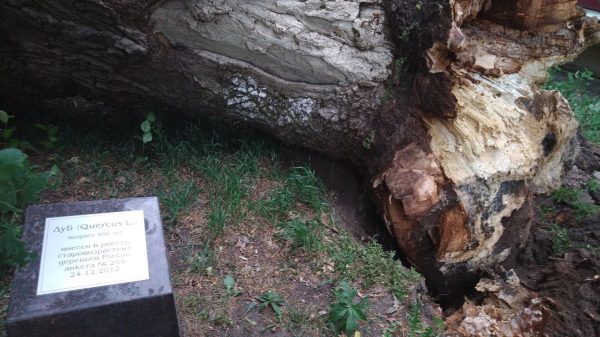Unique mummies from Denmark have long intrigued scientists
The “Man from Wittrup” died a violent death in a swamp 5,200 years ago in what is now Denmark. Now researchers have reconstructed its history.
About 5,200 years ago, a man's life was violently ended in a peat bog in northwestern Denmark. Now researchers have used cutting-edge genetic testing to tell the unexpected story of the “Wittrup Man,” the oldest known immigrant in Danish history.
Bog bodies, uniquely preserved “accidental mummies” discovered in northern Europe, have long intrigued researchers, CNN reports, but a new study claims it's the first time experts have mapped the life histories of the dead to this extent.
< p>The remains of a man were discovered in a peat bog in Vittrup, Denmark, during peat cutting in 1915. His right ankle, lower left tibia, jawbone and fragmented skull were found next to a wooden club. Researchers estimate that he died after being struck in the head at least eight times with a wooden club sometime between 3100 and 3300 BC.
Scientists analyzed the human remains from Vittrup in a recent study published in the journal Nature about Denmark's genetic prehistory, which sequenced the genomes of 317 ancient skeletons. Some of the same researchers decided to conduct an individual study of the Vittrup man after his DNA showed that he was genetically different from the rest of Denmark's Stone Age population. The study detailing the new findings appeared Wednesday in the journal PLOS One.
“I wanted to make the anonymous skull speak and find the person behind the bone. The initial results were “almost too good to be true” which led me to try additional and alternative methods. The result is this amazing life story,” said lead author Anders Fischer, a project researcher at the Department of Historical Research at the University of Gothenburg in Sweden and director of Sealand Archeology.
What the team discovered while piecing together the life of the Wittrup man , sheds light on the movements and connections between different Stone Age cultures.
A research team seeking to uncover as much as possible about the life of the Wittrup man analyzed his tooth enamel, tartar and bone collagen using advanced analytical techniques .
The combined discovery of specific chemical elements in his enamel, such as strontium, nitrogen, carbon and oxygen, and analysis of protein in his teeth and bones revealed how Wittrup Man's diet changed from that of a hunter-gatherer to that of a farmer before he died at age from 30 to 40 years.
Wittrup Man was probably born and raised on the coast of the Scandinavian Peninsula, perhaps in the cold climate of Norway or Sweden. He was genetically closest to people from these regions and had darker skin than Stone Age communities in Denmark.
In Scandinavia, Wittrup Man probably belonged to a northern community of fish-eating hunter-gatherers , seals and even whales, suggesting that the foragers had ships that allowed them to fish on the open sea.
And then something made his life change dramatically, and by the age of 18 or 19, Wittrup Man ended up in Denmark and followed a peasant's diet, eating sheep and goats.
According to the study authors, his trip to a peasant society in Denmark “indicates an extended journey by boat.” The long-distance movements of the Wittrup man were unusual, “but may say something about the ongoing exchanges between Danish peasants and northern hunter-gatherers,” said study co-author Karl-Göran Sjögren, a researcher at the Department of Historical Research at the University of Gothenburg.
Why the Wittrup man made such a long journey is unknown, but researchers have a couple of theories. It is possible that he was a captive or slave who became part of local society in Denmark. Or he was a trader who settled in Denmark.
Archaeologists know that flint axes were traded from Denmark to the Arctic Circle in Norway, said study co-author Lasse Sørensen, head of the department of ancient Danish and Mediterranean cultures at the National Museum in Denmark. Copenhagen.
“The study adds to this discovery of a specific flesh-and-blood individual,” Sørensen said.
Sjogren said the study of Wittrup Man helped researchers gain insight into the genetics, lifestyle and ritual practices that can be traced across societies Stone Age.
“Wittrup Man is a migrant – the earliest undisputed first-generation immigrant known in and around Denmark,” comments Fischer. “To our knowledge, this is the first time that scientists have been able to map the life history of a northern European man in such minute detail and in such a distant past.”
The Wittrup man lived “a remarkable life before he was killed and thrown into a swamp,” said Fischer, who has studied Stone Age cultures for more than 40 years. He is particularly interested in how Denmark transitioned from a hunter-gatherer culture to a farming culture around 6,000 years ago.
Why did the man from Wittrup end up in a peat bog with a crushed skull? The exact answer will never be known, but researchers believe he was killed as a sacrifice, which was a common practice in the region at the time.
“Wetlands appear to have played a special role in religious life in Northern Europe in those days,” said Fischer. – The man from Wittrup was killed in an unusually cruel way. Other people were killed with arrows or strangled with rope.”
“Perhaps we should understand him as a slave who was sacrificed to the gods when he was no longer fit for hard physical labor,” study co-author Christian Christiansen, a professor of archeology at the University of Gothenburg, said in a statement.
But It is also possible that Wittrup's man was in the wrong place at the wrong time.
“Based solely on archaeological evidence, it is difficult to distinguish this from, for example, someone being killed in a conflict or being robbed and killed,” said Roy van Beek, associate professor of landscape archeology at Wageningen University and Research in the Netherlands, according to e-mail. “That he may have been a slave or held captive is, in my opinion, quite speculative, but the authors also show some caveats.”
Van Beek was not involved in this study, but was a co-author of the study. published in the journal Antiquity, about the wealth of information that bog bodies provide about prehistoric life. “In my opinion, this is a fascinating study that shows the enormous contribution that innovative bioarchaeological methods can make to improving our knowledge of prehistoric societies, including such important aspects as population history, migration and lifestyle,” Van Beek said after reading the new study . “Our research into antiquity shows that thousands of prehistoric and early historic people ended their lives in bogs across northern Europe, and research like this shows the incredible scientific potential they hold.” And this is just one person – we're just scratching the surface!”





























































Recent Comments